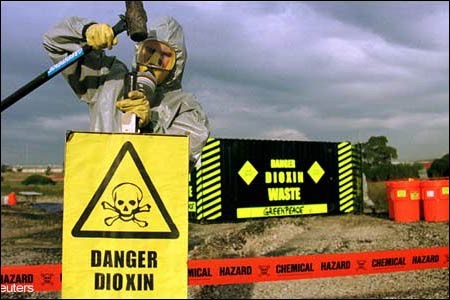
SEVESO Compliance
Occupli Consultancy is a leading provider of Seveso Compliance services in Ireland today. Occupli Consultancy specialists provide practical solutions and advice to our clients in the Seveso area. Our consultants have many years` experience at Tier I and Tier II sites all over Ireland and the UK including development of the MAPP, Safety Reports, etc.
Applicable Irish Legislation
In 1976 an accident happened at a chemical plant in Seveso, Italy which manufactured herbicides and pesticides. A dense vapour cloud containing tetrachlorodibenzoparadioxin (TCDD), a poisonous carcinogen, was released from a runaway exothermic reaction. This resulted in more than 2000 people being treated for dioxin poisoning.
Following the Seveso accident, legislation was compiled aimed at the prevention and control of such accidents. In 1996 the Council Directive 96/82/EC on the control of major accident hazards – so called Seveso II Directive – was adopted.
According to the Seveso II Directive, employers must:
- Take all measures necessary to prevent major accidents and to limit their consequences for both man and the environment
- Prove to the competent authority that all necessary measures, as stated in the directive, have been taken in particular for the purposes of inspections

Speak to the consultancy team today!
SEVESO II & III (COMAH) Compliance Audits
SEVESO II & III (COMAH) Inventory Assessments
Major Accident Prevention Policy (MAPP) Preparation
- Take all necessary measures to prevent major accidents involving dangerous substances
- Limit the consequences to people and the environment of any major accidents which do occur
Aim of SEVESO II & III (COMAH) Compliance Audits
Their main aim is to prevent and mitigate the effects of those major accidents involving dangerous substances.
At Occupli Consultancy, we will make sure that your business comply with COMAH regulations by auditing and analysing the following areas and capacities:
- Dangerous substances present.
- Technical and organisational preventive measures in place, as emergency response, External Emergency Plans, fire suppression systems, safety operation procedures.
- Features and elements in the workplace to mitigate the effect of a major accident.
By carrying out an on-site walk-through inspection an in-depth review of the plant our Process Safety Engineers will identify possible lapses in the legislation compliance and they will ensure that the plant and the equipment, as well as the operating and maintenance procedures, meet the COMAH requirements.
Once the audit will be performed, a report will be issued giving detail of existing control measures, basis of safety to be implemented and actions required to comply with COMAH directives.
The Control of Major Accident Hazards (COMAH) Regulations ensure that businesses:
- Take all necessary measures to prevent major accidents involving dangerous substances
- Limit the consequences to people and the environment of any major accidents which do occur
Aim of SEVESO II & III (COMAH) Inventory Assessments
Sites generally enter into scope of the COMAH Regulations in one of two ways:
a) A business decides to expand and increase its inventory of dangerous substances;
b) External factors result in one or more of the COMAH qualifying thresholds being met or exceeded (for example, reclassification of a substance as dangerous to the environment).
Occupli Consultancy Safety engineers will perform inventory assessments for the COMAH site and will develop a report with the following information:
- Details of dangerous substances present (or likely to be present*) on site;
- Quantity and physical form of those dangerous substances;
- Brief description of site activities related to the dangerous substances;
- Features of the environment which could lead to a major accident on the site;
- Elements of surrounding environment which could make the consequences of a major accident worse.
* ‘Likely to be present’ – eg inventory variations which may occur because of seasonal demand, fluctuations in business activity etc, or dangerous substances which may be present sometimes but not at other times. Also includes dangerous substances which may be generated during the loss of control of an industrial chemical process.
COMAH Pre-Construction Safety Report
Preparation of COMAH Pre-construction Safety Report for clients who are planning new sites under the COMAH Regulations. This work will include:
- Liaising with various authorities
- Inventory of hazardous substances
- Assessment of Potential for Major Accident to the Environment
- Major-Accident Hazard Identification
- Risk Assessment & Consequential Modelling
- Basis of Safety – plant design
- COMAH Safety Report
- Preparation of COMAH Safety Report to form the basis of safety for the operation of a COMAH site.
All establishments that are subject to the COMAH regulations must have a Major Accident Prevention Policy (MAPP) document on site.
The Control of Major Accident Hazards (COMAH) Regulations ensure that businesses:
- Take all necessary measures to prevent major accidents involving dangerous substances
- Limit the consequences to people and the environment of any major accidents which do occur
Our Process Safety Engineers at Occupli Consultancy, will gather all the relevant information for the preparation of the MAPP document, as training records, your own internal site inspection records, audit reports, operating procedures, risk assessments and they will develop the referred document. The Major Accident Prevention Policy (MAPP) document will be issued highlighting the following aspects:
- Roles and responsibilities of personnel at all levels involved in the management of the major hazards
- Training. Arrangements for selecting personnel and providing training to ensure they are competent to work with a major hazard.
- Planning and implementing Hazard identification and risk assessments
- Procedures and instructions for safe operation
- Design and modifications of installations
- Identification of foreseeable emergencies and the preparation, test and review of emergency procedures.
- Measuring compliance
- Review and audit
